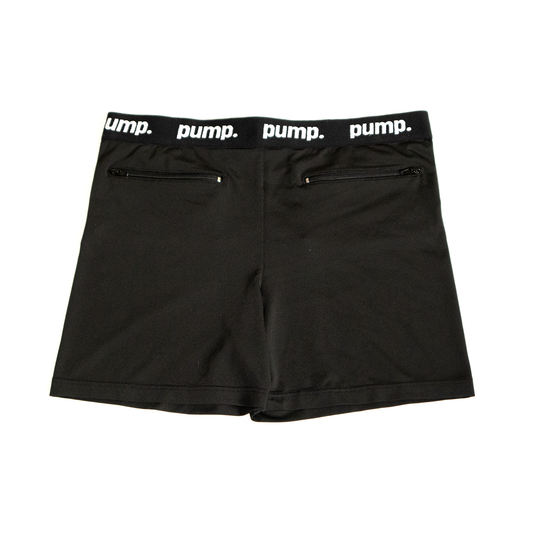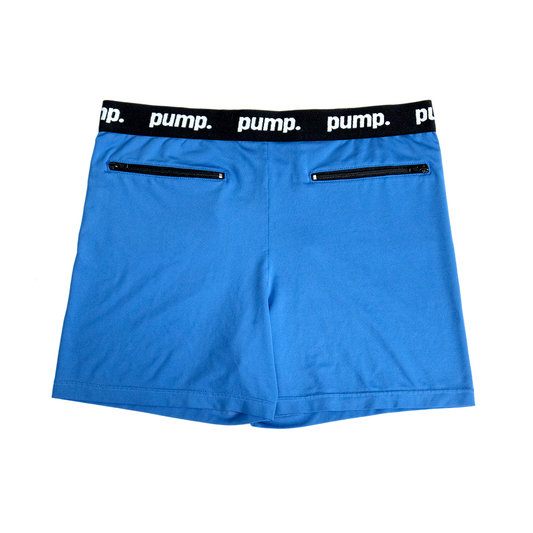1. Clip Your Pump to Your Nightwear for Security
One of the simplest ways to keep your insulin pump secure overnight is to clip it to your pajamas or whatever you wear to bed. Most insulin pumps come with a clip or case that lets you attach the device to a waistband or pocket. By clipping the pump to your nightwear – for example, the waist of your pajama bottoms or the band of your underwear – you prevent it from moving freely while you sleep. Tuck any excess tubing inside your clothing so it doesn’t snag on anything. Many pump users find this method comfortable and hardly notice the pump once it’s attached. In fact, experts note that sleeping with your pump clipped to your PJs shouldn’t cause any issues, and it’s very unlikely you’ll press any buttons or accidentally deliver insulin by rolling on it. If you tend to sleep in minimal clothing or without pajamas, consider wearing a lightweight sleep waistband or underwear with a secure place to clip the pump. This way, you can sleep comfortably with an insulin pump attached, knowing it’s not going anywhere.
2. Use an Insulin Pump Belt or Pouch
If you’re an active sleeper who tosses and turns, using an insulin pump belt can offer extra peace of mind. An insulin pump belt (also called a pump pouch or band) is a soft, stretchy belt worn around your waist that holds your pump in a snug pocket. It keeps the pump in a fixed position throughout the night, so you won’t wake up to find it dangling or sliding around. Many pump users – including children – use pump belts at night for comfort. You can find belts with velcro or elastic that have a small pouch for the pump, or even make a DIY version (for example, by sewing a baby sock onto an elastic band as a makeshift pump holder). The key is that the pump stays put against your body. This greatly reduces the chance of tangling in the tubing or pulling on your infusion set. In fact, diabetes experts suggest that wearing an insulin pump belt is a good way to prevent tubing tangles by keeping the pump in one place. If a belt isn’t your style, a similar option is a small zippered pouch or fanny-pack worn low on your waist. The idea is to manage your insulin pump at night in a way that feels almost invisible – after a few nights, you might forget it’s even there.
3. Place the Pump Under Your Pillow or Beside You
Not everyone finds it comfortable to have the pump attached to their body while sleeping. If that’s the case for you, another approach is to position the pump nearby instead of clipping it on. Many people simply tuck their pump under a pillow at night. The pillow acts as a cushion and barrier, so you won’t directly feel the pump, and the pump stays relatively still. This method works best if you don’t move around too much in your sleep. Some even use a body pillow and place the pump under or next to it on the bed. Alternatively, you can let the pump lie freely on the mattress beside you. As long as you have enough tubing length, the pump can rest by your side while you sleep. If you share the bed with a partner, it may help to keep the pump on your side of the bed, so it’s less likely to get jostled. For added safety, try not to leave the pump right at the edge of the bed – you don’t want it taking a tumble to the floor if you toss around. Finally, you can also place the pump on a nightstand or clip it to your headboard. This usually requires using a longer infusion set tubing to give you the freedom to roll over. Many pumps offer tubing in various lengths (for example, longer tubing can reach a bedside table easily). Just be mindful that if you do roll in the night, you might find the tubing draped over you in the morning – a minor inconvenience that can be sorted out when you wake. Overall, keeping the pump under your pillow or nearby on the bed is a comfortable sleeping with an insulin pump solution for those who prefer not to wear it, as it keeps the device close but out of the way.
4. Keep Your Tubing Tangle-Free and Secure
One common concern for new pump users is getting tangled in the pump’s tubing overnight. The tubing connecting your pump to your infusion site is designed to be flexible and durable, so it typically won’t knot up tightly – even if you find it wrapped around you, it’s usually not a big problem. That said, there are a few steps you can take to ensure a tangle-free experience. First, consider the length of your infusion set tubing. If you’re consistently finding loops of tubing around your limbs in the morning and it bothers you, you might try using a shorter tubing length next time you change your set. Less excess tubing means less to get wrapped up in. On the other hand, if you feel a shorter tube is tugging when you move, switch to a longer length to give you more slack (especially useful if you want to put the pump on your nightstand or under a pillow).
No matter what length you prefer, a great habit is to secure your tubing before you fall asleep. After you’ve connected a new infusion set or if you have extra slack, tuck the tubing gently into your pajama waistband or under the elastic of your underwear. This keeps the line close to your body so it’s less likely to snag or catch on anything as you shift in bed. Some people even use a small clip or a piece of medical tape to hold a loop of tubing in place on their shirt – do whatever feels comfortable and keeps the tubing out of your way. Also, double-check that your infusion set adhesive is firmly stuck before bedtime (a bit of medical tape or an overlay patch can help if your set is loosening). This prevents the set from accidentally peeling off due to a tug. Lastly, for peace of mind, you can enable the “lock” feature on your insulin pump (if it has one) so that no buttons can be pressed while you sleep. Pumps are designed so it’s extremely unlikely to deliver a bolus or change settings from an accidental bump in the night, but using the lock can help you feel extra secure. With your tubing tidied up and your pump settings locked, you can drift off knowing everything is snug, safe, and ready to do its job overnight.
5. Try Pump‑Friendly Clothing with Built-in Pockets
Sometimes the easiest solution for managing an insulin pump at night is to wear sleepwear that’s made for the task. In fact, the need for comfortable pump placement has led some companies to design clothing specifically for insulin pump users. One popular option is boxer briefs with insulin pump pockets, which give you a convenient spot to hold your pump while you sleep. For example, Pump Clothing Company (www.pumpclothingcompany.com) offers soft, breathable boxer briefs with a small built-in pocket that securely holds your insulin pump. You simply slide your pump into the pocket, and it stays out of sight and out of mind through the night. There’s no bulky add-on belt, and no need to clip the pump to your waistband – the pocket keeps it in place even if you change positions. This kind of pump-friendly clothing can be a game-changer for those who prefer a minimalist approach. You can sleep in just your underwear and still have your pump safely attached, which is both convenient and comfortable. The pocket is typically positioned for easy access, so you can reach your pump if needed, but otherwise you might forget it’s even there. It’s a hassle-free way to sleep comfortably with an insulin pump. If you’re curious about trying pump-pocket underwear, feel free to check out the selection on PumpClothingCompany.com – it might be the simple fix you’ve been looking for to improve your nightly comfort with the pump.
Closing Thoughts: Adjusting to sleeping with an insulin pump does take a little time, but remember that thousands of people do it every night and have no problems getting a full night’s sleep. It comes down to finding the tip or combination of tips that works best for your routine. Whether you clip your pump to PJs, use a cozy belt, place it under your pillow, or slip it into pump-friendly boxers, the goal is to make the pump an afterthought at bedtime. We hope these practical tips guide you toward peaceful, pump-friendly nights. With a bit of experimentation and the right setup, you’ll be able to sleep comfortably with your insulin pump and focus on dreaming, not your diabetes device. Sleep tight!
Sources: Managing life with an insulin pump and sleeping comfortably – Children’s Hospital at Montefiore cham.orgcham.org; Diabetes.co.uk on sleeping with an insulin pump diabetes.co.ukdiabetes.co.uk; 4AllFamily diabetes blog – tips for sleeping with an insulin pump 4allfamily.com4allfamily.com.




